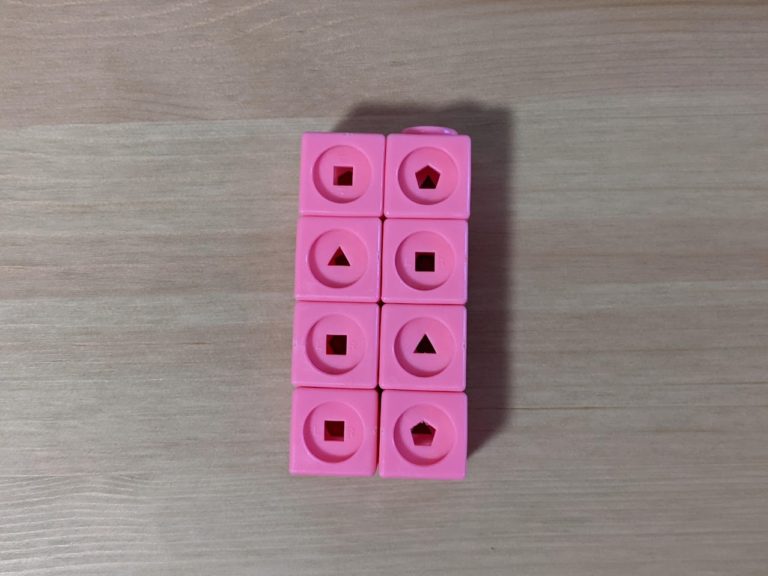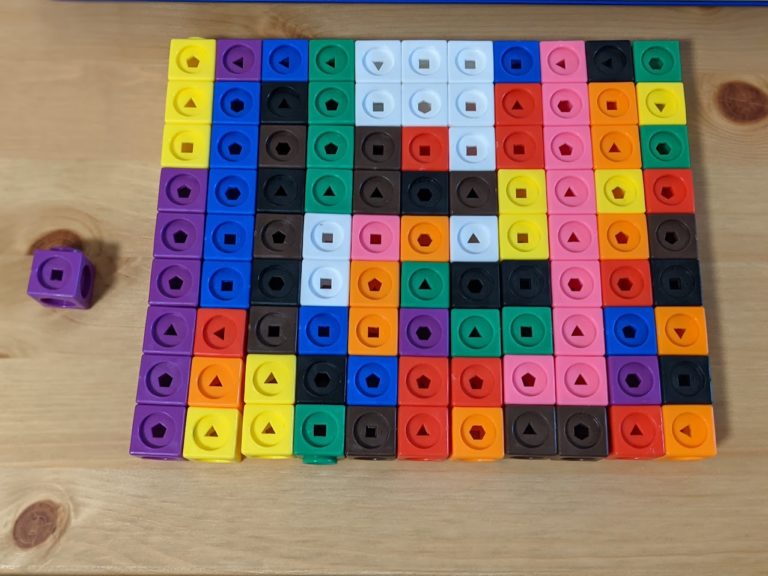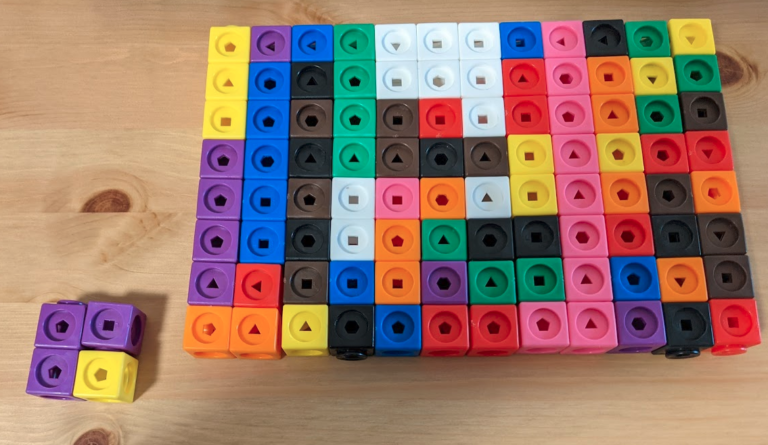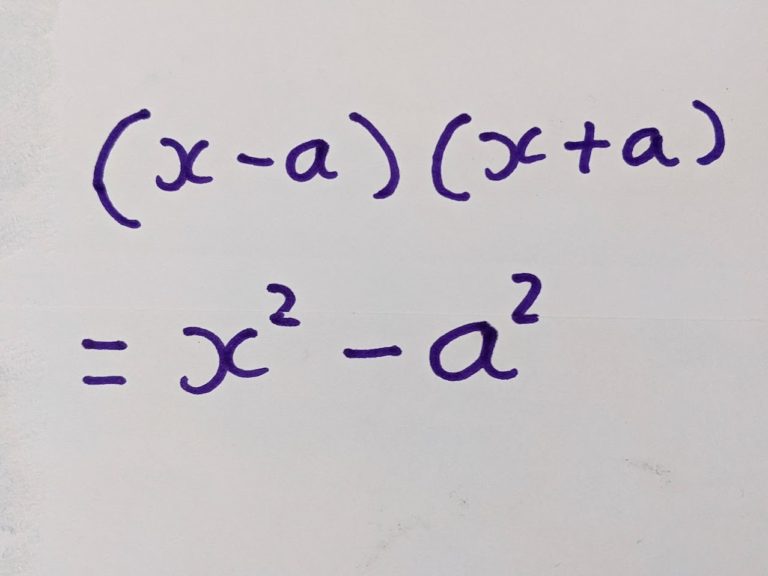Numberblocks – Difference of Two Squares
Anybody who’s spoken to me about maths will have quickly learnt that I’m obsessed with multi-link blocks. In fact the last time I had a job interview, I inadvertently spent 15 minutes talking about them and the Cbeebies programme ‘Numberblocks’.
 ‘Octoblock’
‘Octoblock’
In moments of insanity I have claimed that every topic taught in high school maths could be taught with the blocks. And so here, in this blog, I try to make good on my mad proclamations.
The Difference of Two Squares
I was playing with my (then) four-year-old, who was putting the blocks together. She had 100 blocks in front of her and she was building in a pleasing way, producing bigger and bigger squares. But to my horror when she had a 10×9 rectangle, she opted for adding an eleventh column. I tried to encourage a 100 square, but the girl had her own opinions. When she finished her 11×9 rectangle she found she had one cube left over and she was very cross.
 One Left Over
One Left Over
This got me thinking about how things would have turned out if she had gone off-piste sooner. Would a 12×8 rectangle have two blocks left over? Of course we know that twelve eights are 96 so there would be 4 blocks left over.
 4 left over
4 left over
What about a 13×7 rectangle? Well seven thirteens are 91, so 9 left over.
1, 4, 9… Hang on, these are square numbers!
Does that mean that 5×15 would leave 25 blocks from 100? Well indeed it does!
The natural question that follows is: Is this a special feature of 100, or would it work with any starting number of blocks?
Let’s try a 12 by 12 square. That’s 144 blocks. How many spare blocks do you have if you make a 10×14 rectangle? 10 and 14 are two away from twelve, so our conjecture is there should be 2×2=4 spare blocks. We know that 10×14 = 140 and so it works.
Now the fun begins- we have a quick way to solve tricky looking multiplications, mentally, in seconds.
What’s 35×45? Well, 40 x 40 is 1600. 35 and 45 are 5 away from 40. So we just work out 1600-25= 1575.
Any multiplication where the two factors are equidistant from a multiple of 10 becomes easy. 58×62 = 3600-4 = 3596.
So naturally I felt quite pleased about all this. Until I came to prove it; when I suddenly felt incredibly stupid.
Let’s call the number of bricks you start with x squared. Let’s say “a” is the distance from x.
Our conjecture is:

There’s nothing like maths to sometimes make you feel a bit stupid is there? I didn’t realise what I was writing out until I had finished writing it.
I like this story because before I played with the blocks, the difference of two squares was a bit of a boring consequence of expanding brackets. A special case of factorising a trinomial. Thanks to a stubborn child, it’s all more interesting now.
